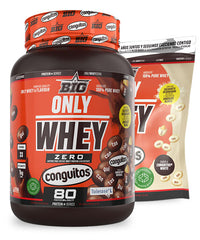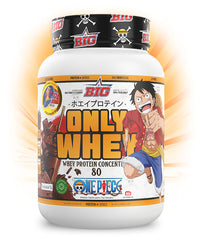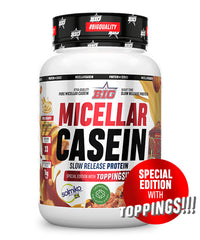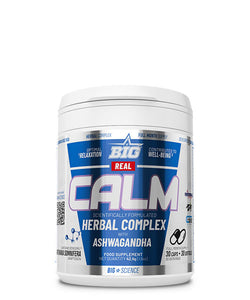
Ashwagandha: the all-round herb
Sergio Guerrero
INTRODUCTION
In this new entry we will discuss in depth a plant whose name is unpronounceable, but which current evidence is giving and gives it some very interesting properties. We are talking about Ashwagandha , Withania somnifera. Come on?
To put ourselves in context and learn a little about its history, ashwagandha originates in Ayurvedic medicine*. Because of this, it is not surprising that a large amount of ashwagandha originates from India, as well as other countries such as China and its surrounding areas.
Ashwagandha has been involved in the treatment of various conditions (Fig. 1) for many centuries, and more recent ones include: cortisol, anxiety, inflammation, stress, diabetes, fatigue or fertility.

- Figure 1: Possible beneficial applications with the intake of Ashwagandha
CHEMICAL STRUCTURE AND PATHWAYS OF ACTION.
The main structures within ashwagandha are steroidal lactones or withanolide glycosides. The technical classifications are not so important to know, however, these structures (Fig. 2) are exclusive to ashwagandha and have characteristics that can be summarized as follows:
| Withanolide A | Inhibits acetylcholinesterase, immunostimulant, immunosuppressant and cortisol suppressor |
| Withanoside IV | Reduces stress and anxiety and increases neurogenesis and the length of axons (one end of a neuron) |
| Sominone | Promotes neurogenesis and axon length |
| Ashwaghandanolide | Inhibitory effect on certain types of cancer |
| Whitaferin A | Cardioprotective, anti-inflammatory, immunomodulatory, antiangiogenesis, antimetastasis and anticancer properties |
| Cytotoxic withanone | Promotes cell apoptosis in breast cancer cells |
Each of these withanolides is attributed to the effects of ashwagandha. However, these compounds are more active in some parts of the plant than others, so you need to pay close attention to where your ashwagandha is extracted.
Most ashwagandha root extracts will be standardized to the first three of the glycowithanolides, as these are the main compounds that provide the most benefits according to research.

- Figure 2: Chemical structure of Ashwagandha
The role of ashwagandha as an anxiolytic seems to be linked to controlling stress mediators , the best known being cortisol; In addition, it also appears to reduce the activity of the hypothalamic-pituitary-adrenal (HPA) axis, a system responsible for regulating the stress response. On the other hand, ashwagandha is also capable of “mimic” the neurotransmitter GABA (gamma amino butyric acid), this neurotransmitter decreases the activity of neurons and inhibits nerve cells from being overloaded. This action produces a calming effect .
MAIN USES AND DOSAGE.
The main use of ashwagandha is as an adaptogen , that is, a natural substance present in many types of plants that allow the body to stabilize various physiological processes, as well as promoting homeostasis (balance).
Reduces stress and anxiety
In a study with 58 participants, those who took 250 or 600 mg of ashwagandha extract for 8 weeks significantly reduced perceived stress and levels of the stress hormone cortisol compared to those who took a placebo.
Additionally, participants taking ashwagandha supplements experienced significant improvements in sleep quality compared to the placebo group.
Improves muscle strength
In one study, male participants who took 600 mg of ashwagandha per day and participated in resistance training for 8 weeks had significantly greater gains in muscle strength and size compared to a placebo group (Fig. 3)

- Figure 3: The effect of Ashwagandha treatment on muscle strength [a bench press 1 RM, b) leg extension 1 RM] and muscle size in c) thigh, d) arm and e) Chest
Improves physical performance
Ashwagandha also appears to improve physical performance by improving oxygen consumption VO 2 max in healthy adults and athletes. VO2 max is the maximum amount of oxygen a person can use during intense activity. It is a measure of the physical condition of the heart and lungs. Higher VO2max is associated with a lower risk of heart disease.
Improves fertility and increases testosterone
In one study, 43 overweight men ages 40 to 70 who had mild fatigue took tablets containing ashwagandha extract or a placebo daily for 8 weeks.
Ashwagandha treatment was associated with an 18% increase in DHEA-S, a sex hormone involved in testosterone production. Participants taking the herb also had a 14.7% greater increase in testosterone than those taking the placebo.
Additionally, a review of four studies found that ashwagandha treatment significantly increased sperm concentration, semen volume, and sperm motility in men with low sperm count . It also increased sperm concentration and motility in men. with a normal sperm count.
The evidence for this is still limited and several confounding factors may be present .

- Figure 4: Possible mechanism of Ashwagandha intake on improvement in fertility and testosterone>Can improve sleep quality
In a study of 50 adults aged 65 to 80 years, they found that taking 600 mg of ashwagandha root per day for 12 weeks significantly improved sleep quality and mental alertness upon awakening compared to a placebo treatment . Additionally, in a recent systematic review and meta-analysis, ashwagandha was found to have a small but significant positive effect on overall sleep quality .
Taking ashwagandha reduced people's anxiety levels and helped them feel more alert when they woke up . The researchers noted that the results were most pronounced in people with insomnia and those who took more than 600 mg a day for 8 weeks or more.
The most common doses range between 300 mg and 500 mg. This will mean a total content of 5 mg - 25 mg of withanolides , depending on the strength of the extract.
The lower range (up to 100 mg of extract) is only attributed to a small number of benefits, namely as an immunosuppressant and synergistic with other anxiolytic compounds. We found this dose to be too low to provide noticeable effects.
PATENTS
SENSORIL : It has one of the highest contents of withanolides, up to 10%. Sensoril is extracted from both leaves and roots to achieve such a high concentration of withanolides. This may seem concerning based on what we mentioned above, however, they standardized Withaferin A concentrations to 0.5% or less and it is perfectly safe.
KSM-66: KSM-66 is extracted and standardized only from the roots. This full-spectrum extract mimics the natural composition of the plant, matching natural compounds and their proportions. This makes it a very safe and low-toxic form of ashwagandha, with glycowithanolide concentrations of 5% and negligible concentrations of Withaferin A, the cytotoxic withanolide. This widely researched ashwagandha extract is considered safe and effective.
SHODEN: Contains up to 35% withanolides. It offers high bioavailability and proven activity even at low doses.
CONCLUSIONS
Ashwagandha is a safe supplement for most people, although its long-term effects are unknown .
A review of 69 studies found that ashwagandha root appears to be safe and effective in managing certain health conditions, such as stress, anxiety, and insomnia.
Another study conducted on 80 healthy men and women showed that taking 600 mg of ashwagandha daily for 8 weeks was safe and did not cause any adverse health effects on the participants .
However, certain people should not take it. For example, pregnant women should avoid it because it can cause pregnancy loss if used in high doses. Additionally, people with hormone-sensitive prostate cancer and those taking certain medications, such as benzodiazepines, anticonvulsants, or barbiturates, should avoid taking ashwagandha .
Some side effects have been reported in people taking ashwagandha supplements, including upper gastrointestinal upset, drowsiness, and diarrhea . Additionally, ashwagandha can affect the thyroid , so people with thyroid disease should consult with a health professional before taking it.
Dosage recommendations for ashwagandha vary. For example, doses ranging from 250 to 1,250 mg per day have been shown to be effective for different conditions .
Research results suggest that the effects of ashwagandha are not immediate , so keep in mind that you may need to take it for several months before you start to notice its effects.
You can take ashwagandha in many ways, either in a single dose or in multiple doses per day. And you can take it with meals or on an empty stomach.
As with all herbal extracts, ashwagandha must be standardized to a glycowithanolide concentration for the proposed benefits to occur. Common extract concentrations range from 1% to 10%.
REFERENCES
- Cheah KL, Norhayati MN, Husniati Yaacob L, Abdul Rahman R. Effect of Ashwagandha (Withania somnifera) extract on sleep: A systematic review and meta-analysis. PLoS One. 2021 Sep 24;16(9):e0257843. doi: 10.1371/journal.pone.0257843. PMID: 34559859; PMCID: PMC8462692.
- Cheah, KL, Norhayati, MN, Husniati Yaacob, L., & Abdul Rahman, R. (2021). Effect of Ashwagandha (Withania somnifera) extract on sleep: A systematic review and meta-analysis. PloS one, 16(9), e0257843. https://doi.org/10.1371/journal.pone.0257843
- Choudhary D, Bhattacharyya S, Bose S. Efficacy and Safety of Ashwagandha (Withania somnifera (L.) Dunal) Root Extract in Improving Memory and Cognitive Functions. J Diet Suppl. 2017 Nov 2;14(6):599-612. doi: 10.1080/19390211.2017.1284970. Epub 2017 Feb 21. PMID: 28471731.
- Deepa S. Mandlik (Ingawale) & Ajay G. Namdeo (2021) Pharmacological evaluation of Ashwagandha highlighting its healthcare claims, safety, and toxicity aspects, Journal of Dietary Supplements, 18:2, 183-226, DOI: 10.1080/19390211.2020.1741484
- Durg S, Shivaram SB, Bavage S. Withania somnifera (Indian ginseng) in male infertility: An evidence-based systematic review and meta-analysis. Phytomedicine. 2018 Nov 15;50:247-256. doi: 10.1016/j.phymed.2017.11.011. Epub 2017 Nov 29. PMID: 30466985.
- Gorelick J, Rosenberg R, Smotrich A, Hanuš L, Bernstein N. Hypoglycemic activity of withanolides and elicited Withania somnifera. Phytochemistry. 2015 Aug;116:283-289. doi: 10.1016/j.phytochem.2015.02.029. Epub 2015 Mar 18. PMID: 25796090.
- Kaur Narinderpal et al., “A Review on Pharmacological Profile of Withania somnifera (Ashwagandha)” RRJBS |. Volume 2 | Issue 4 | October-December, 2013
- Kelgane, S.B., Salve, J., Sampara, P., & Debnath, K. (2020). Efficacy and Tolerability of Ashwagandha Root Extract in the Elderly for Improvement of General Well-being and Sleep: A Prospective, Randomized, Double-blind, Placebo-controlled Study. Cureus, 12(2), e7083. https://doi.org/10.7759/cureus.7083 .
- Lopresti, A.L., Drummond, P.D., & Smith, S.J. (2019). A Randomized, Double-Blind, Placebo-Controlled, Crossover Study Examining the Hormonal and Vitality Effects of Ashwagandha (Withania somnifera) in Aging, Overweight Males. American journal of men's health, 13(2), 1557988319835985. https://doi.org/10.1177/1557988319835985
- Mahdi, AA, Shukla, K.K., Ahmad, M.K., Rajender, S., Shankhwar, S.N., Singh, V., & Dalela, D. (2009). Withania somnifera Improves Semen Quality in Stress-Related Male Fertility. Evidence-based complementary and alternative medicine : eCAM, 2011, 576962. Advance online publication. https://doi.org/10.1093/ecam/nep138
- Pérez-Gómez, J., Villafaina, S., Adsuar, JC, Merellano-Navarro, E., & Collado-Mateo, D. (2020). Effects of Ashwagandha (Withania somnifera) on VO2max: A Systematic Review and Meta-Analysis. Nutrients, 12(4), 1119. https://doi.org/10.3390/nu12041119
- Salve, J., Pate, S., Debnath, K., & Langade, D. (2019). Adaptogenic and Anxiolytic Effects of Ashwagandha Root Extract in Healthy Adults: A Double-blind, Randomized, Placebo-controlled Clinical Study. Cureus, 11(12), e6466. https://doi.org/10.7759/cureus.6466
- Sengupta, Pallav & Agarwal, Ashok & Pogrebetskaya, Maria & Roychoudhury, Shubhadeep & Durairajanayagam, Damayanthi & Henkel, Ralf. (2017). Role of Withania somnifera (Ashwagandha) in the management of male infertility. Reproductive BioMedicine Online. 36. 10.1016/j.rbmo.2017.11.007.
- Tandon N, Yadav SS. Safety and clinical effectiveness of Withania Somnifera (Linn.) Dunal root in human infections. J Ethnopharmacol. 2020 Jun 12;255:112768. doi: 10.1016/j.jep.2020.112768. Epub 2020 Mar 19. PMID: 32201301.
- Wankhede S, Langade D, Joshi K, Sinha SR, Bhattacharyya S. Examining the effect of Withania somnifera supplementation on muscle strength and recovery: a randomized controlled trial. J Int Soc Sports Nutr. 2015 Nov 25;12:43. doi:10.1186/s12970-015-0104-9. PMID: 26609282; PMCID: PMC4658772.





![CREABIG [Creapure®]](http://bigsupps.site/cdn/shop/products/producto_BIG_creabig_creapure_250g_0noflavour_500x600_8c48a126-a2a2-46a5-9bbd-8763ab82d768_200x.jpg?v=1757315967)





![CFM ISO ZERO [saco]](http://bigsupps.site/cdn/shop/files/producto_cfm_doypack_0noflavour_500x600a_200x.jpg?v=1750981452)
![CLEAR ISO ZERO [750g]](http://bigsupps.site/cdn/shop/files/producto_BIG_clearprotein_icepop_0noflavour_500x600a_200x.jpg?v=1757074297)
![CREABIG FIESTA® KOJAK® flavor - [250g]](http://bigsupps.site/cdn/shop/files/producto_BIG_creabig_kojak_0noflavour_500x600a_200x.jpg?v=1763548822)




